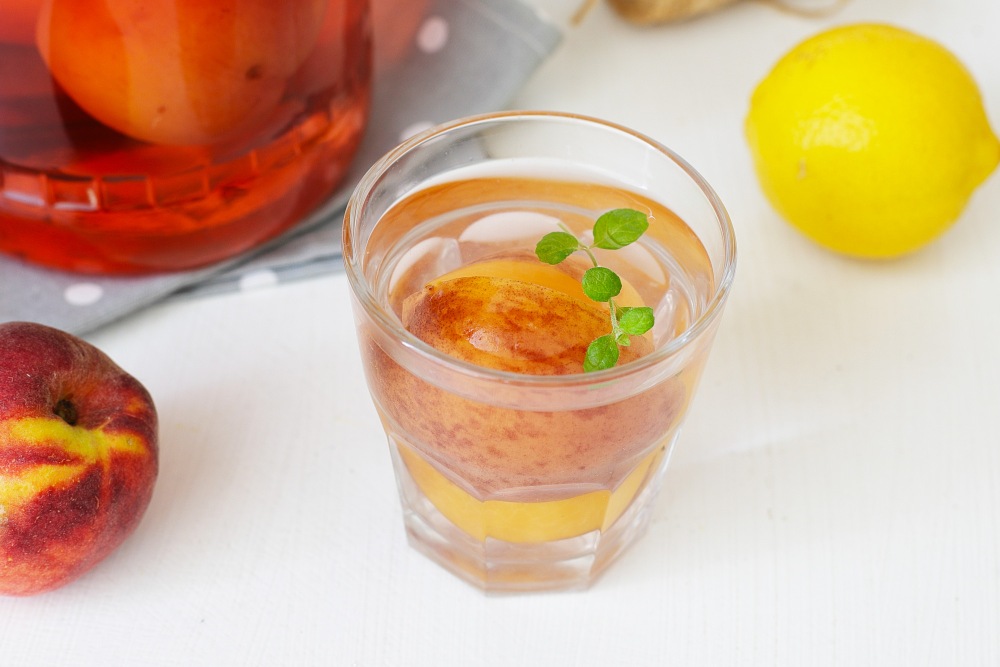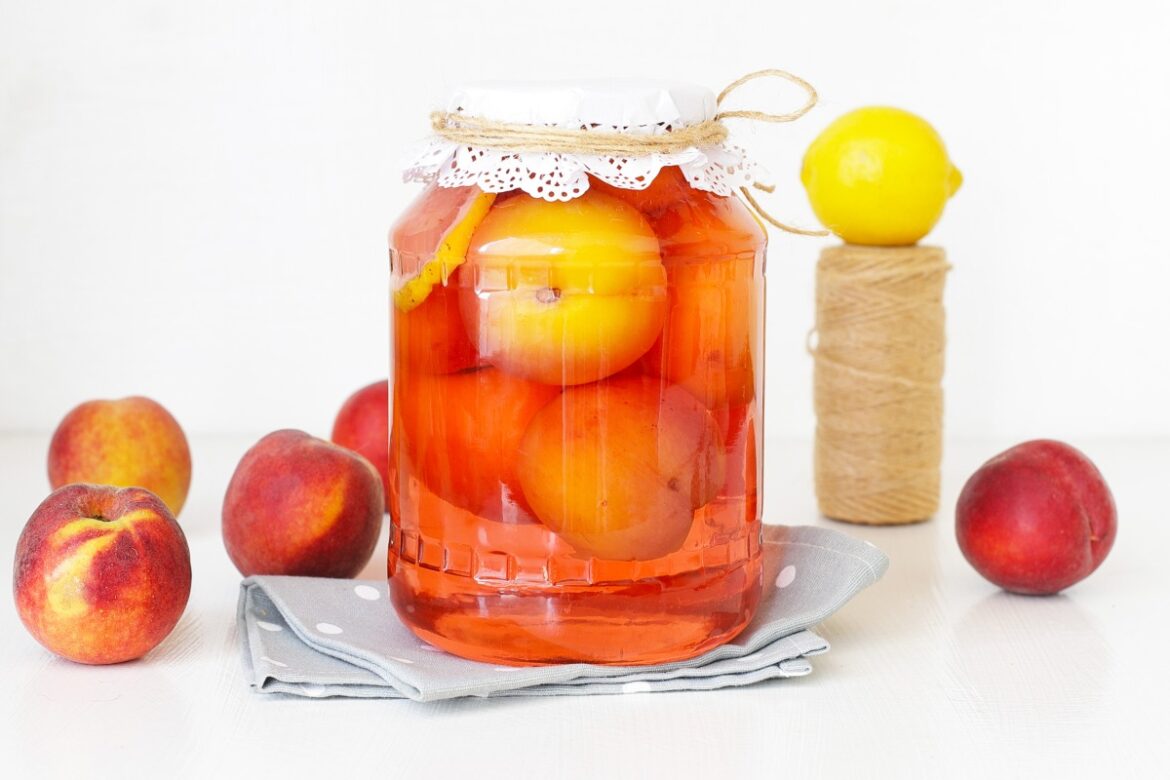Detailed step -by -step recipe with photo: Step 1
-
Prepare the necessary ingredients for a compote recipe from peaches for the winter. The first thing I want to start is the choice of peaches. For compote, it is better to take ripe, but not too soft fruits for them to keep the shape well in the bank. Pay attention to the color: peaches should be bright, with a rich orange shade. Choose fruits without damage and with a thin skin — it gives the compote to light sweet and delicate taste. You can take peaches with a light pink blush, it will also be excellent.
-
Step 2
Prepare a container for canning. This is an important step, because a clean bank is a guarantee that the compote will remain delicious and retain all its qualities throughout the winter.
To wash the cans, I always use a conventional detergent for dishes. The main thing is to choose a tool that cleanses well, but does not leave smell. Any quality dishwashing tool is suitable. It is necessary to thoroughly rinse the banks outside and inside, paying attention to the seams and corners to get rid of any dirt or the remains of old canned food. After that, be sure to rinse the cans well with running cold water. This will help to remove the remnants of the detergent, and banks will be absolutely clean and safe for further use.
As for the covers, they should not be forgotten either. Rinse the lids in the same way as banks, in hot water with a detergent, and then be sure to rinse. I always use new lids to be sure that they will not fail and ensure tightness. The covers should be without damage, otherwise the compote may not maintain freshness.
In this recipe, I do not sterilize cans and lids, since when using boiling water, containers and peaches are well steamed. If you still want to be sure of perfect cleanliness, you can sterilize cans with lids after washing.
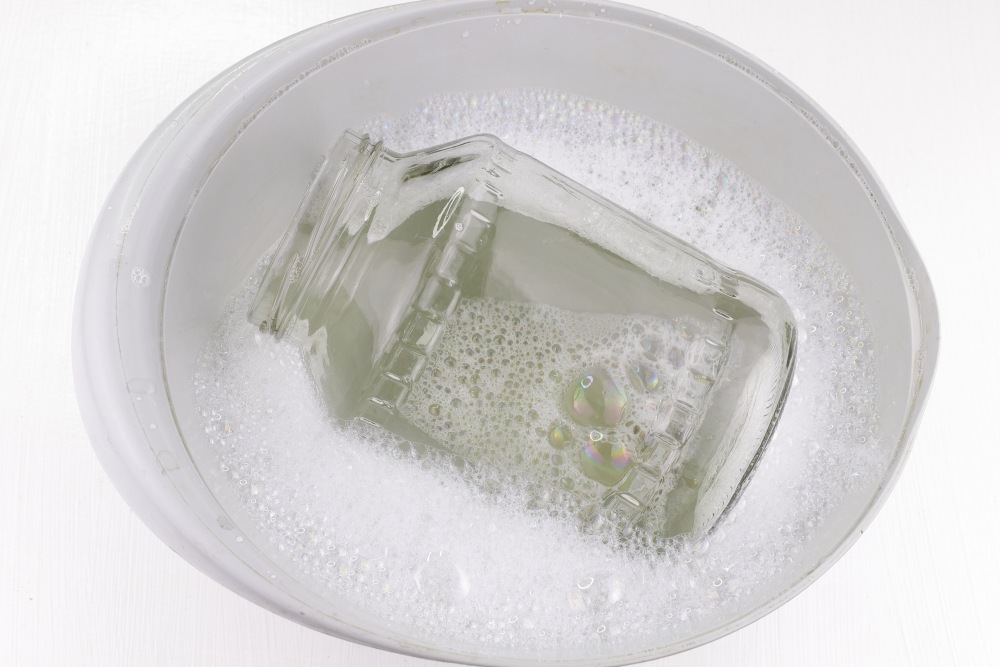
-
Step 3
Prepare fruits. First, peaches must be carefully sorted out. I always select dense, ripe, but not overripe fruits. Soft or with a damaged skin is better to postpone — they can boil and spoil the appearance of the compote. Also, fruits with spaces of mold or dents are not suitable.
Persians must be washed well under running water to remove all dust, villus from the peel and possible traces of processing from the surface. If the peaches are very fluffy, you can first pour them with water with the addition of baking soda (1 teaspoon per 1 liter of water), rub slightly with your hands, and then rinse thoroughly. This helps to cleanse them more efficiently.
I usually lay small peaches whole, especially if the peel is thin. If the fruits are large, they can be cut in half and removed the bone — so they give a better taste and are easier to lay in a jar. The main thing is to work carefully in order to maintain a form.
Watch the master class «How to spend in the kitchen no more than 1 hour a day and at the same time it is good and useful to feed» 👉🏻 here
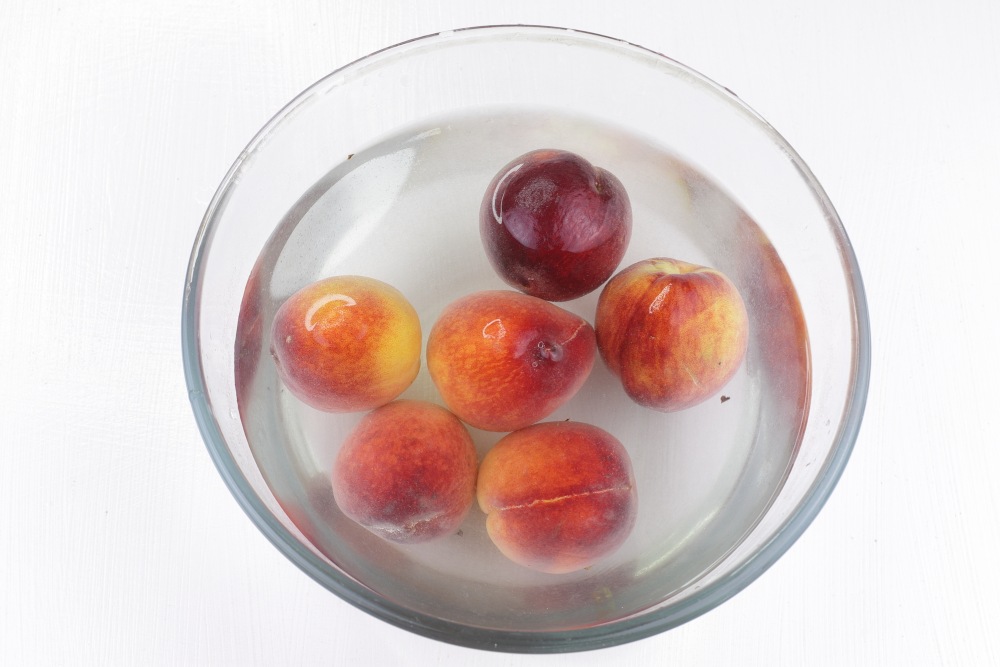
-
Step 4
On a jar of 1.5 liters, about 5-6 medium fruits, depending on the size. When using halves, they must be laid downward, trying to distribute evenly by the volume of the jar. Fruits should not be “to the eyeballs” — there should be a little space between them so that the syrup flies freely between the fruits. The bank should be filled with peaches by about 2/3 or a little more, this is enough for the compote to turn out to be fragrant and saturated, but not too thick.
Together with the peaches, I put several thin slices of lemon in a jar — usually 2-3 slices per can are enough. The lemon not only gives a light, pleasant sourness and refreshing citrus aroma, but also plays the role of a natural preservative. Its acid helps to balance the sweetness of the syrup and extends the storage period of compote, preventing acidification.
If you use a lemon with a thick peel, you can first remove part of the white layer so that the compote does not grind. And if a lemon with a thin skin, put the slices right as it is without cleansing.
📌 Other proven recipes from peaches, see 👉🏻 HERE
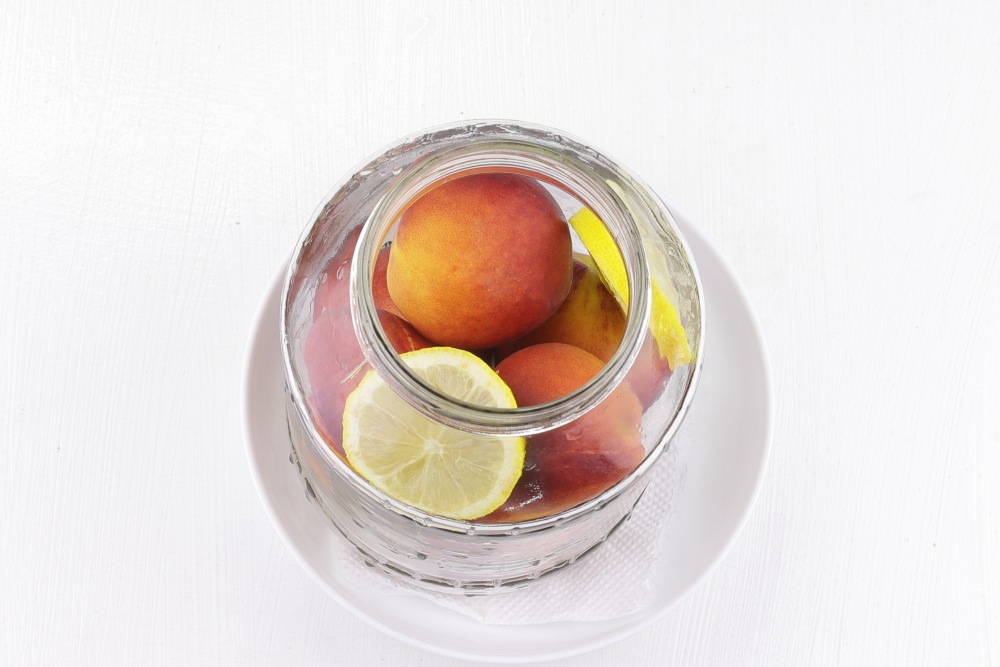
-
Step 5
Boil water. It should be boiled boiling water to ensure proper heat treatment. As soon as the water boils, gently and slowly pour it with peaches and lemon slices to the very top with it.
Pour it carefully, with a thin stream so that the glass does not burst from a sharp temperature difference. After the bank is completely filled, cover it with a lid. Then wrap the jar in a warm towel or plaid and leave for 30–40 minutes.
Why is this necessary? This stage is called preliminary pasteurization. It allows:
— Warm up the fruits and partially sterilize them to destroy most microbes and enzymes that can ruin the compote.
— Prepare the peaches for filling with syrup — they become softer and partially give taste to water, which will become the basis of the future syrup.
—The equalization to the temperature in the bank so that, at the next with hot syrup pouring, the glass does not crack from a sharp contrast of temperatures.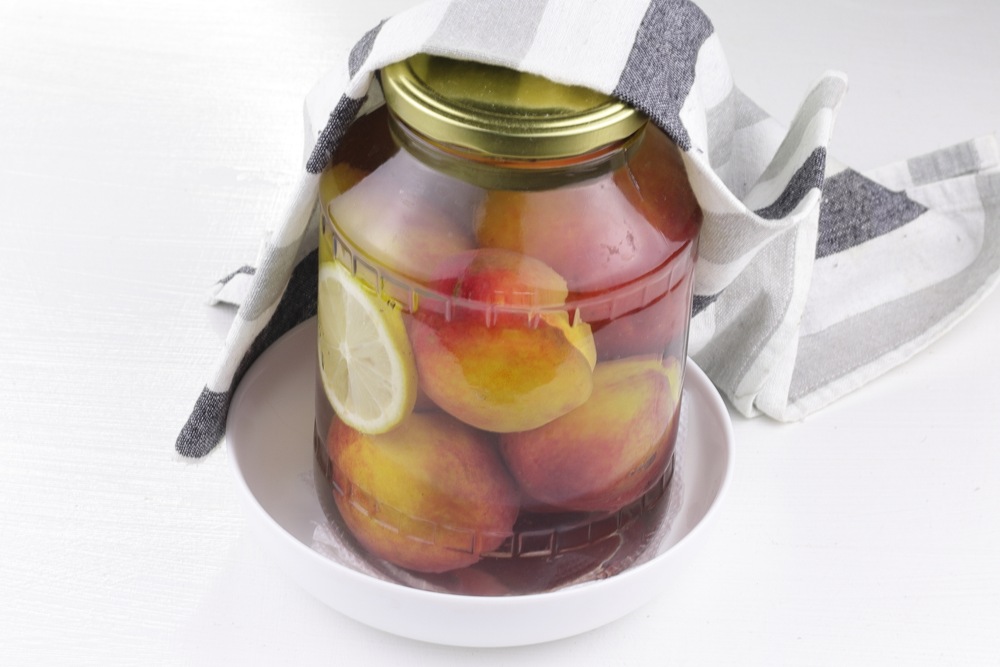
-
Step 6
Drain the water from the can with peaches to the stewpan. Cover the jar with a lid right away so that the fruits do not cool and do not begin to be blurred. It will also protect peaches from possible dust or microbes.

-
Step 7
Pour sugar and citric acid into a stewpan with water. Citric acid here plays several roles at once: it emphasizes the taste of fruits, helps to balance the sweetness of the syrup, prevents the sugar of compote during storage and improves its safety, performing the function of a soft preservative. Set on moderate fire and, stirring, bring to a boil. Boil 2-3 minutes. This is enough for it to become homogeneous.
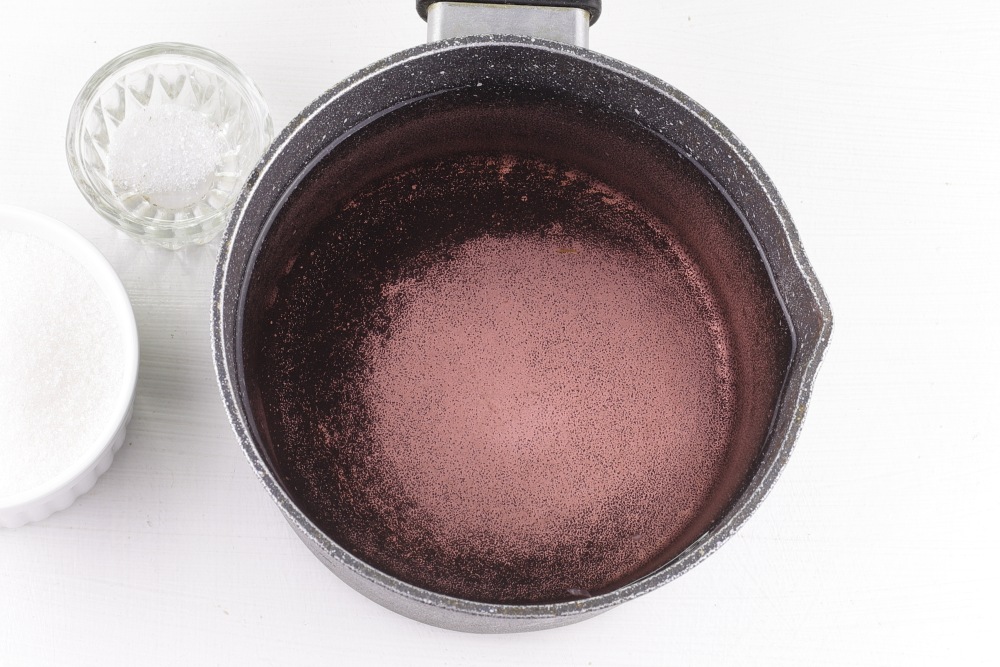
-
Step 8
Pour boiling syrup into a jar with peaches. It is necessary to fill the syrup to the very top, almost «under the neck», so that there is no air left in the bank — this is important for tightness and reliable storage. If there are too many empty space, this can lead to the formation of mold or fermentation. Firmly blame the lid. Use the key to rolling up (if you have metal covers) or tightly closing screw lids — the main thing is that there are no subtexts.
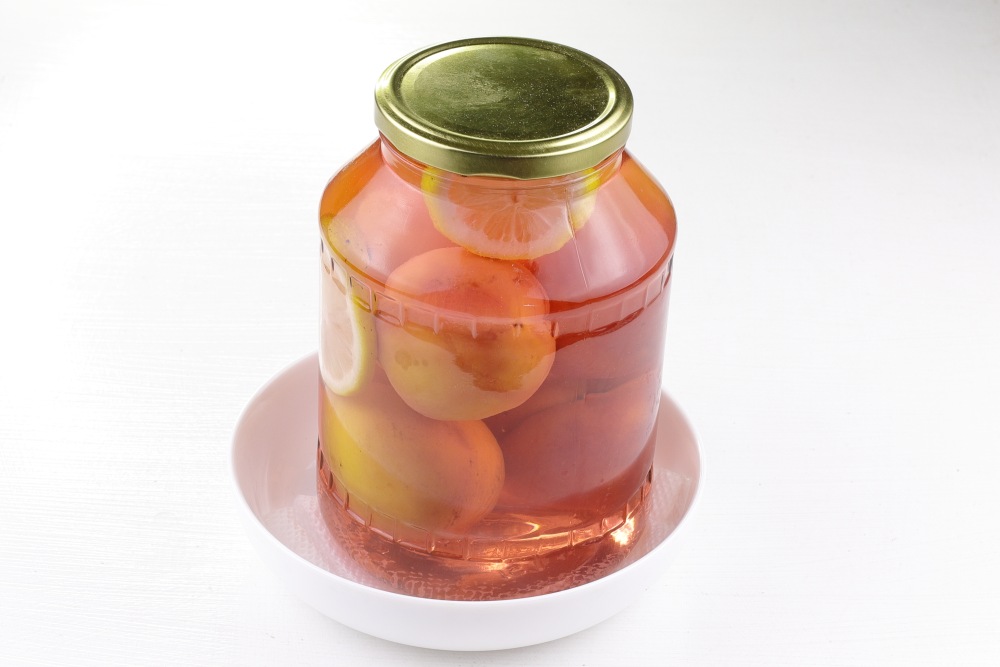
-
Step 9
Turn the bank. This helps to check the tightness — if the lid passes, the leakage will be noticeable. Hot syrup additionally treats the inside of the lid, destroying possible microbes remaining after rolling up. The inverted jar is well wrapped. Leave in this position until completely cooled — it usually takes 10-12 hours.
Wrapping creates the effect of slow cooling, which works as additional pasteurization: the temperature in the bank decreases gradually, avoiding sharp changes. Thanks to this, the compote is better preserved, does not clutch, and the lids remain airtight.
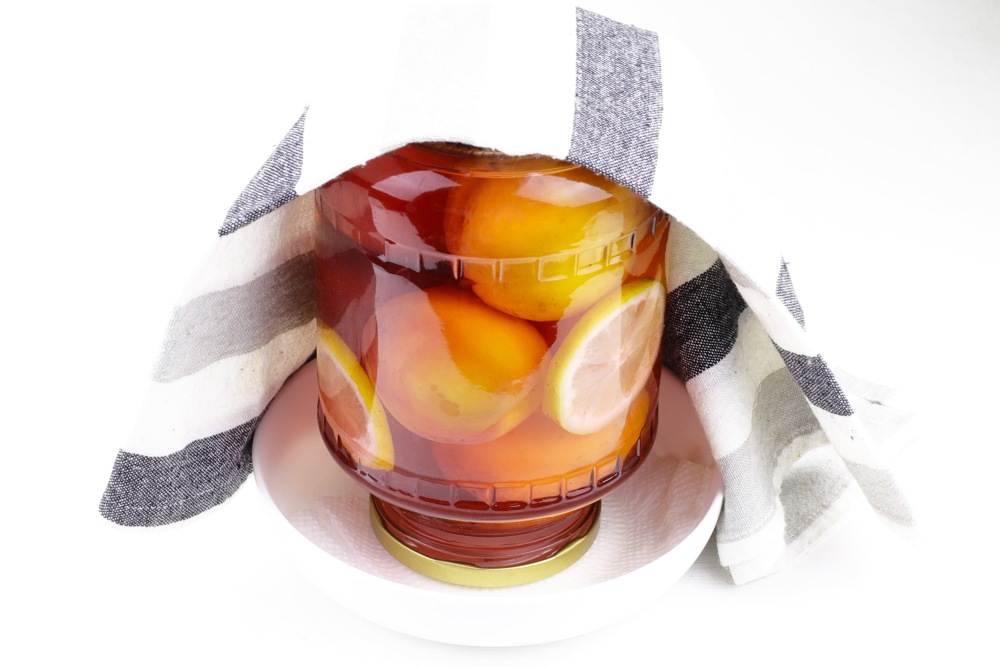
-
Step 10
The compote from peaches for the winter is ready. Delicious blanks!
📌 If you like to cook home blanks, be sure to look into our A selection of other compotes recipes — With photos and videos. There you will find ideas with cherries, apricots, grapes and even basil!
